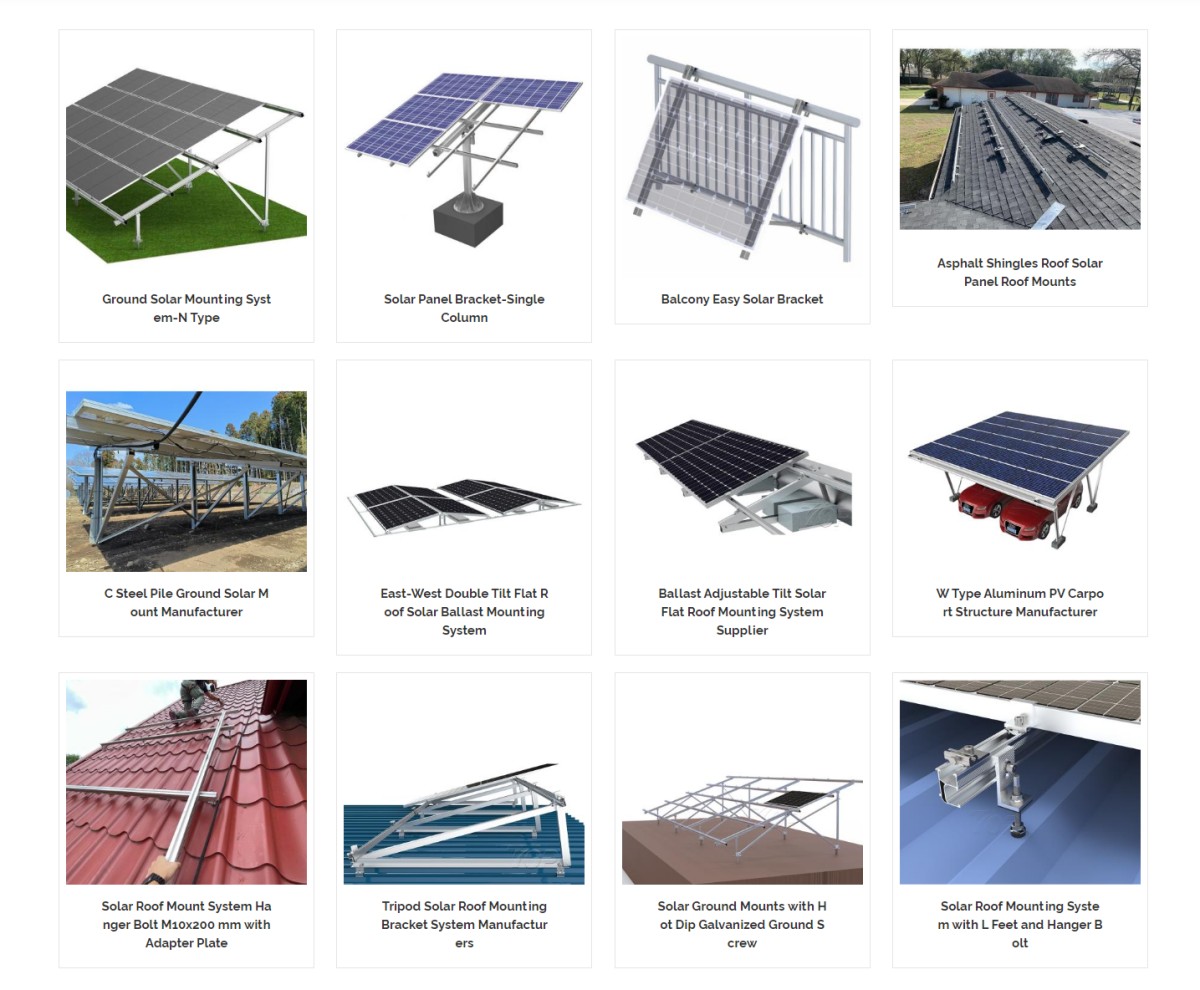There are various types of solar mounting systems used to install solar panels, each with its unique characteristics and applications. Below are some of the most common solar mounting systems:
Roof-mounted solar systems are installed directly on rooftops and are typically the most common choice for residential and commercial solar installations.
Roof Integrated Systems: These systems integrate the solar panels directly into the roof structure, providing a seamless and aesthetically pleasing appearance. The panels become part of the roof, replacing traditional roofing materials.
Ballasted Systems: Ballasted systems use weighted supports to hold the solar panels in place without penetrating the roof surface. This system is ideal for flat roofs and is especially popular for commercial buildings.
Penetrating Systems: These systems involve attaching the solar panels to the roof with bolts or other means that penetrate the roof surface. Penetrating systems offer strong stability but may require additional sealing to prevent leaks.
Ground-mounted solar systems are installed on the ground rather than on a roof and are ideal for areas with ample open space.
Fixed-Tilt Systems: In fixed-tilt systems, solar panels are mounted on fixed frames set at a specific tilt angle. The angle is optimized for the location’s latitude, maximizing energy production.
Adjustable-Tilt Systems: These systems allow for adjusting the tilt angle of the solar panels, enabling optimization of energy production based on seasonal variations and the sun's position throughout the year.
Tracking Systems: Tracking systems use motorized mounts to adjust the solar panels’ angle in real-time, following the sun’s movement throughout the day. This maximizes energy production by ensuring the panels are always at the optimal angle.
Pole-mounted systems are designed to elevate solar panels off the ground, often providing additional space for other activities beneath.
Top-of-Pole Mounts: These systems mount solar panels on a pole that is placed in a sunny location. This type of installation allows easy maintenance and angle adjustments.
Side-of-Pole Mounts: Solar panels are attached to the sides of a pole in side-of-pole mounts. This option provides flexibility, allowing solar installations on existing structures.
PV tracking systems maximize solar energy capture by dynamically adjusting the position of the solar panels to track the sun.
Single-Axis Trackers: These systems track the sun's movement on a single axis (typically east to west), adjusting the angle of the solar panels accordingly. Single-axis trackers are widely used and offer a cost-effective solution to increase energy output.
Dual-Axis Trackers: Dual-axis trackers adjust the angle of the solar panels on both the horizontal and vertical axes, optimizing exposure to the sun throughout the day and across seasons. These trackers offer the highest energy production but at a higher cost.
Canopy and carport systems integrate solar panels into overhead structures, serving dual purposes: providing shade and generating clean energy.
Canopy Mounts: Solar panels are mounted on overhead structures like carports, creating shaded parking areas while generating solar energy. These systems are ideal for commercial spaces and can also help reduce energy costs by powering nearby buildings.
BIPV (Building Integrated Photovoltaic): BIPV involves integrating solar panels directly into the architecture of a building, such as solar windows or solar shingles. This system seamlessly blends solar technology with the building’s design, providing both functionality and aesthetic appeal.

These are just a few examples of solar mounting systems, each designed to meet specific needs and site conditions. When choosing a solar mounting system, it's essential to consider factors such as location, available space, energy needs, budget, and aesthetic preferences. Consulting with a professional will help you determine the most suitable system for your solar installation.

 Xiamen TopFence Co.,Ltd.
Xiamen TopFence Co.,Ltd. No. 77, LingXia South Road, Huli District, Xiamen City, Fujian, China
No. 77, LingXia South Road, Huli District, Xiamen City, Fujian, China Tel: +8613365923720
Tel: +8613365923720
 Email: info@xmtopfence.com
Email: info@xmtopfence.com
 IPv6 network supported Sitemap
| XML
| Blog
| Privacy Policy
IPv6 network supported Sitemap
| XML
| Blog
| Privacy Policy


